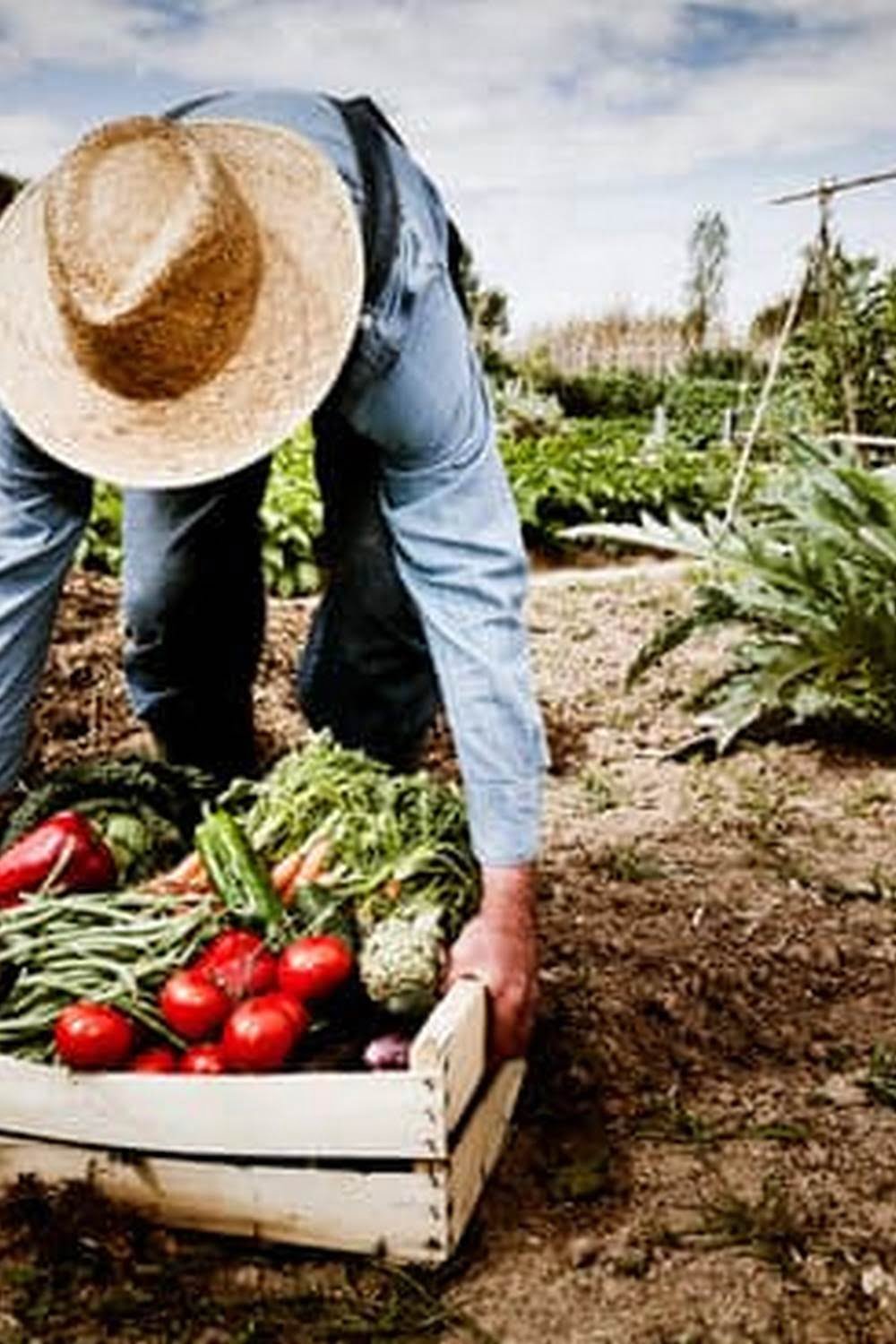Are you interested in creating a productive and beautiful vegetable garden? Vegetable gardening design is crucial for maximizing space, increasing yield, and ensuring the health of your crops. In this article, we will explore the importance of thoughtful design in vegetable gardening and how it can contribute to the success of your garden.
When it comes to designing a vegetable garden, one of the first steps is assessing your available space. This includes considering factors such as sunlight, soil quality, and drainage. By carefully evaluating these elements, you can optimize your garden layout and ensure that your vegetables have the best chance of thriving.
Another essential aspect of vegetable gardening design is choosing the right vegetables for your specific climate, soil type, and available space. Each type of vegetable has its own requirements in terms of water, sunlight, and companionship with other plants. By selecting wisely, you can set yourself up for a successful harvest.
Stay tuned as we delve into the details of garden layout and design, soil preparation and maintenance, watering and irrigation methods, pest and disease control techniques, as well as harvesting and succession planting strategies. Whether you’re just starting out or looking to improve your existing vegetable garden, this article will provide valuable insights into creating a well-designed and productive growing space.
Assessing Your Space
When it comes to successful vegetable gardening design, one of the first steps is to assess the available space for gardening. Whether you have a small urban garden or a larger backyard plot, understanding your space is crucial in maximizing yield and ensuring the success of your vegetable garden.
Start by determining the physical dimensions of the area where you plan to cultivate your vegetables. This will help you decide how many plants you can accommodate and how they should be organized within the space. Additionally, take into consideration factors such as sunlight exposure, soil quality, and drainage. Vegetables generally require 6-8 hours of direct sunlight daily, so it’s important to identify areas in your garden that receive adequate light.
Another important aspect of assessing your space for vegetable gardening design is understanding the quality of your soil and its drainage capabilities. Conduct a soil test to determine its pH level and nutrient content, as this will influence which vegetables will thrive in your garden. Proper drainage is also essential to prevent waterlogged soil, which can lead to root rot and other plant diseases.
By thoroughly assessing your space for vegetable gardening design, you can make informed decisions about which vegetables will grow best in your garden and how to best utilize the available resources for optimal results.
Choosing the Right Vegetables
When it comes to vegetable gardening design, selecting the right vegetables is crucial for a successful and bountiful harvest. Consider the climate, soil type, and available space in your garden before choosing which vegetables to plant. Here are some tips for choosing the right vegetables for your gardening space:
- Consider Climate: Some vegetables thrive in cool weather, while others prefer warmer temperatures. Research the climate in your area and choose vegetables that are well-suited to your local conditions.
- Soil Type: Different vegetables have varying soil requirements. For example, root vegetables like carrots and potatoes prefer loose, well-draining soil, while leafy greens like lettuce and spinach thrive in rich, fertile soil.
- Available Space: Take into account the amount of space you have for gardening. If you have limited space, consider growing compact varieties or using vertical gardening techniques to maximize space.
In addition to these considerations, it’s important to think about the specific needs of each vegetable in terms of water, sunlight, and companionship. Some vegetables may require more frequent watering, while others can tolerate drier conditions. Certain plants may need full sun exposure, while others prefer partial shade.
In Summary,
the key to successful vegetable gardening design is thoughtful consideration of which vegetables are best suited to your specific environment and available space. By taking into account climate, soil type, and space constraints when choosing your vegetable varieties, you can set yourself up for a productive and thriving garden.
Remember that different vegetables have different needs in terms of water, sunlight, and companionship with other plants. Be sure to research each vegetable variety you plan to grow to ensure that they will thrive in your garden environment.
Garden Layout and Design
When it comes to vegetable gardening design, the layout and design of your garden can significantly impact the success of your harvest. Proper planning and organization can maximize space and increase yield, making the most out of your gardening efforts. Here are some key considerations for creating an effective garden layout and design.
- Consider the needs of different vegetables: Different vegetables have distinct requirements in terms of water, sunlight, and companionship. When planning your garden layout, take into account the specific needs of each type of vegetable you want to grow. For example, plants that require more sunlight should be placed in areas with maximum exposure to the sun.
- Utilize raised beds and vertical gardening: Raised beds can help optimize space and improve soil drainage, while vertical gardening allows you to grow more in a small area. Both techniques are great options for maximizing space in a vegetable garden.
- Practice companion planting: Companion planting involves growing different types of plants together to benefit each other in some way, such as repelling pests or providing nutrients. By strategically incorporating companion planting into your garden design, you can create a more harmonious ecosystem that promotes healthy growth.
By carefully considering these aspects of garden layout and design, you can create an efficient and productive vegetable garden that makes the most of your available space.
Proper planning will ensure that your vegetables have sufficient room to grow while making use of every inch of your gardening space. You’ll also have an organized and aesthetically pleasing outdoor space that makes tending to your garden a joy rather than a chore. With these tips on vegetable gardening design in mind, you’ll be well on your way to creating a beautiful and bountiful garden.
Soil Preparation and Maintenance
Preparing the soil is essential for successful vegetable gardening design. The first step is to assess the soil quality in your designated gardening area. You can do this by conducting a soil test to determine its pH level, nutrient content, and composition. Based on the results, you can then make any necessary amendments to improve the soil quality. Adding organic matter such as compost or aged manure can help increase soil fertility and improve its structure, drainage, and aeration.
In addition to adding organic matter, it’s important to incorporate fertilizer into the soil based on the specific needs of the vegetables you plan to grow. Different vegetables require different levels of nutrients, so it’s crucial to understand their individual requirements. This will ensure that your plants have access to the necessary nutrients for healthy growth and high yields.
Ongoing maintenance of the soil is also vital for a productive vegetable garden. This involves regular weeding to remove competing plants that can steal nutrients and water from your vegetables. Additionally, mulching around your plants can help control weeds while retaining moisture in the soil. Proper soil maintenance sets the foundation for a thriving vegetable garden.
| Aspect | Details |
|---|---|
| Soil Quality Assessment | Conduct a soil test to determine pH level, nutrient content, and composition |
| Adding Organic Matter | Incorporate compost or aged manure to improve fertility and structure of the soil |
| Fertilizer Application | Add fertilizer based on specific nutrient requirements of chosen vegetables |
| Ongoing Maintenance | Regular weeding, mulching, and monitoring of soil condition for continued productivity |
Watering and Irrigation
When it comes to vegetable gardening design, watering and irrigation play a crucial role in the success of your garden. Different vegetables require different levels of water and ensuring consistent watering is essential for healthy plant growth. Proper irrigation methods can also help in maximizing water efficiency, especially in areas prone to drought or with limited water supply.
One of the key considerations for vegetable gardening design is the choice of watering method. Traditional methods such as hand watering or using a hose can be effective for small gardens, but they can be time-consuming and may not always provide consistent moisture to the plants. Drip irrigation systems are a popular choice for vegetable gardens as they deliver water directly to the plant roots, minimizing evaporation and ensuring efficient use of water.
In addition to choosing the right watering method, proper drainage is also important in vegetable gardening design. A well-designed garden layout should include measures to prevent waterlogging, which can lead to root rot and other issues. Whether it’s through raised beds or incorporating proper slope into the garden beds, good drainage is essential for maintaining healthy plants.
| Watering Method | Advantages |
|---|---|
| Drip Irrigation | Efficient use of water, delivers moisture directly to plant roots. |
| Sprinkler System | Covers a large area, suitable for larger gardens. |
| Soaker Hose | Delivers slow, consistent water flow at ground level. |
By incorporating proper watering and irrigation techniques into your vegetable gardening design, you can ensure that your plants receive the moisture they need for optimal growth while minimizing water wastage. This not only contributes to a more productive garden but also promotes sustainability in your gardening practices.
Pest and Disease Control
Identifying Common Pests and Diseases
One of the key aspects of successful vegetable gardening design is pest and disease control. It is important to be able to identify common pests such as aphids, caterpillars, and beetles, as well as diseases like powdery mildew and blight. Understanding the signs of infestation or infection early on can help prevent widespread damage to your vegetable garden.
Natural and Organic Methods for Control
When it comes to controlling pests and diseases in your vegetable garden, there are a variety of natural and organic methods that can be implemented. This can include attracting beneficial insects, using neem oil or insecticidal soaps, and employing crop rotation techniques. These methods not only help in controlling pests and diseases but also contribute to a more sustainable and environmentally friendly approach to gardening.
Integrated Pest Management
Implementing an integrated pest management (IPM) approach is essential for effective pest and disease control in a vegetable garden. This involves using a combination of different strategies such as cultural practices, biological controls, and chemical interventions only as a last resort. By taking a proactive and holistic approach to managing pests and diseases, you can minimize the impact on your vegetables while also reducing the need for harmful chemical pesticides.
Harvesting and Succession Planting
When it comes to vegetable gardening design, the process doesn’t end with planting the seeds or seedlings. Harvesting your vegetables and planning for succession planting are essential components of a successful and productive garden. By understanding the best practices for harvesting and implementing succession planting, you can maximize the use of space and extend the growing season of your vegetable garden.
The first step in successful harvesting is to know when each vegetable is ready to be picked. Different vegetables have different indicators of ripeness, such as color, size, and texture. It’s important to harvest at the right time to ensure that your vegetables are at their peak flavor and quality. Additionally, regular harvesting promotes continual production in many vegetable plants, allowing for a longer harvest period.
Succession planting involves planting new crops as soon as one crop is harvested, effectively filling the empty spaces in your garden with new vegetables. This practice maximizes the use of space and extends the growing season, allowing you to enjoy a continuous supply of fresh produce throughout the year. It also helps prevent soil depletion by varying the types of crops grown in specific areas over time.
By carefully planning your harvesting schedule and implementing succession planting in your vegetable gardening design, you can make the most efficient use of your garden space while enjoying a bountiful harvest all season long. With proper care and attention, you can create a thriving vegetable garden that provides an abundance of fresh produce for you and your family to enjoy.
Conclusion
In conclusion, the importance of vegetable gardening design cannot be overstated. By carefully planning and organizing the layout of your garden, you can maximize the use of available space and increase the yield of your crops. Assessing your space, choosing the right vegetables based on your climate and soil type, and implementing effective garden layout and design techniques are all essential components of a successful vegetable gardening design.
Taking into consideration factors such as sunlight, soil quality, and drainage when assessing your space is crucial for the health and growth of your vegetables. Furthermore, selecting vegetables that are well-suited to your specific climate and soil type, as well as considering their individual needs in terms of water, sunlight, and companionship, will contribute to a thriving garden.
Implementing garden layout and design techniques such as raised beds, vertical gardening, and companion planting can also significantly impact the overall success of your vegetable gardening design.
Additionally, proper soil preparation and ongoing maintenance are vital for ensuring healthy plant growth and high yields. The careful selection of watering methods and irrigation systems can make a significant difference in the well-being of your plants. In addition to this, pest and disease control measures should be considered to protect your crops.
Finally, understanding harvesting best practices and implementing succession planting will help you make the most out of your space while extending the growing season. Overall, incorporating these elements into a comprehensive vegetable gardening design will lead to a bountiful harvest year after year.
Frequently Asked Questions
What Is the Best Layout for a Vegetable Garden?
The best layout for a vegetable garden depends on factors like available space, sunlight, and type of vegetables being planted. Raised beds, square foot gardening, and traditional rows are popular layouts to consider.
How Do You Arrange Vegetable Garden Plants?
When arranging vegetable garden plants, it’s important to consider their size at maturity, the amount of sunlight they need, and their compatibility with neighboring plants. Taller plants should be placed in the north or west side of the garden to avoid shading shorter ones.
Which Vegetables Grow Best Together?
Some vegetables grow best together due to their complementary growth habits or ability to repel pests when planted alongside each other. For example, planting tomatoes with basil can enhance the flavor of the tomatoes while deterring pests that affect tomatoes.
Additionally, planting corn with beans and squash (the “Three Sisters”) is a classic example of companion planting that benefits all three crops.

If you’re looking to get into vegetable gardening, or are just looking for some tips on how to make your current garden better, then you’ve come to the right place! My name is Ethel and I have been gardening for years. In this blog, I’m going to share with you some of my best tips on how to create a successful vegetable garden.





